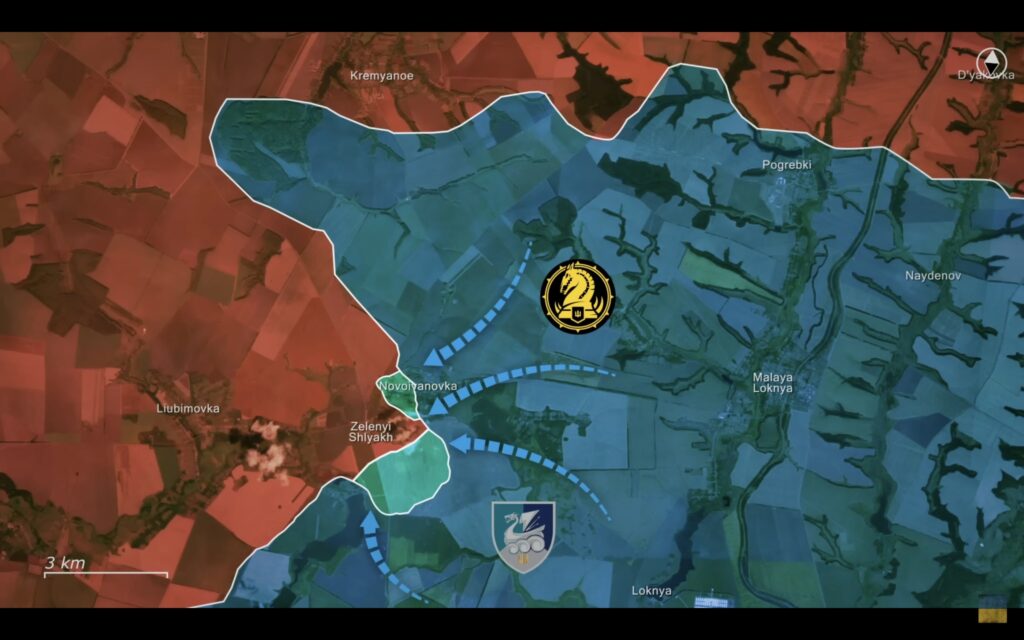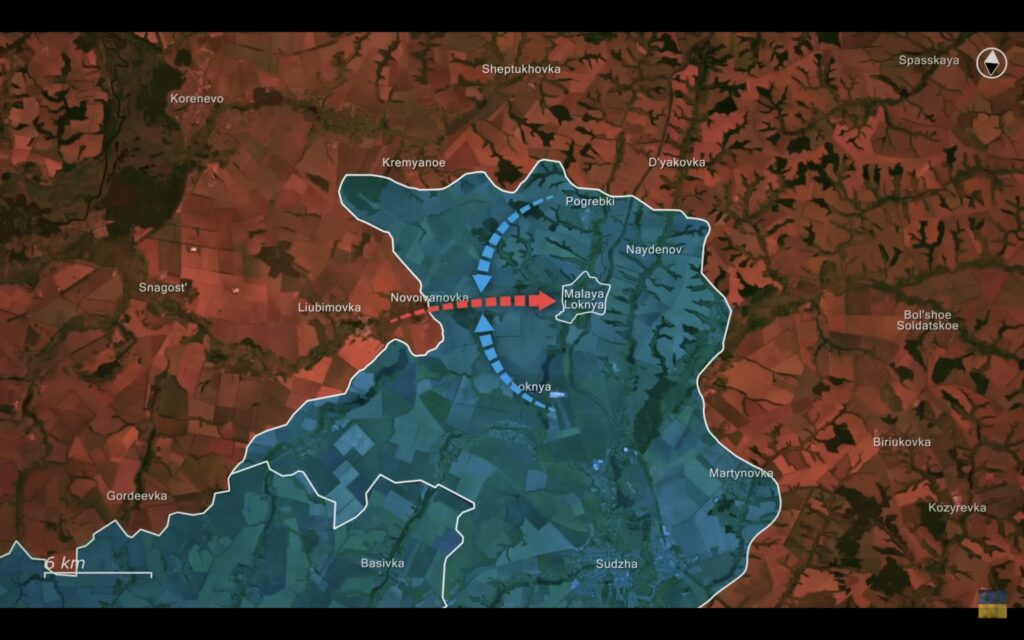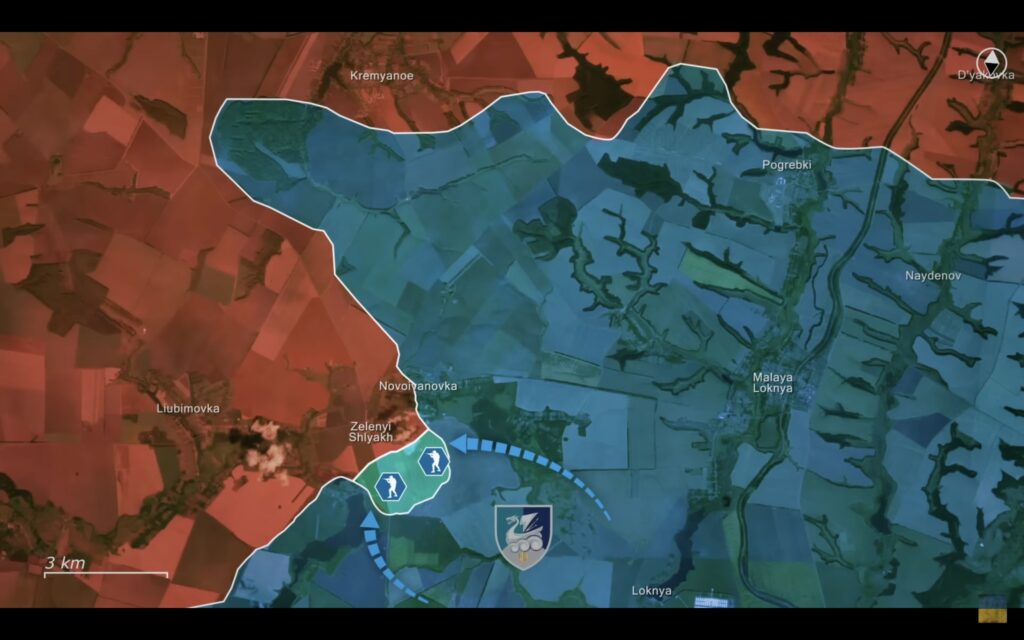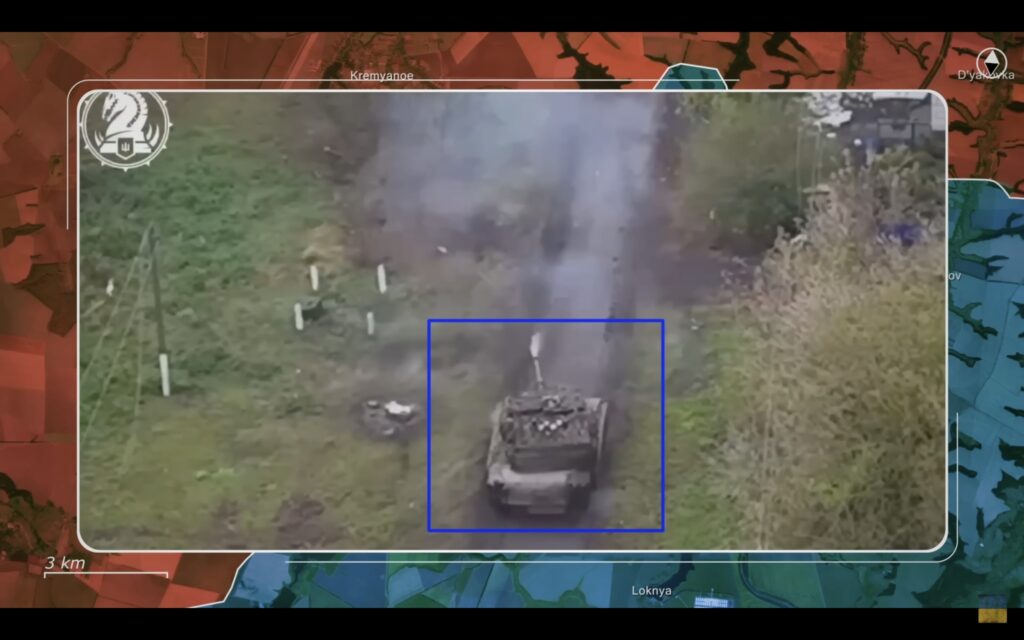Frontline report: Kremlin postpones Kursk liberation deadline as Ukrainian elite brigades destroy Russian assault force
Russian attempts to encircle Ukrainian positions in Kursk Oblast backfired when Ukrainian deployed Western-provided Bradley vehicles and Abrams tanks, which helped to advance.


Today, there are a lot of updates from the Kursk direction, Russia.
Here, the Russians used their tactical gains from previous attacks to expand their operations and attack Malaya Loknya. However, the Russian forces advanced way too narrowly, exposing their weak spots and giving the Ukrainians a chance to make a decisive move.
After consolidating control over Zeleni Shlyakh and Liubimovka, the Russians leveraged stable logistics, utilizing paved roads to amass forces at the strategic intersection of Zeleni Shlyakh. This allowed them to extend their advance toward Malaya Lokhnya via a direct assault.
The plan involved a rapid push along the 7-kilometer road, using BTR-82 armored personnel carriers to cover the distance in just five minutes. Once in position, Russian stormtroopers would dismount and engage in close combat to seize control of the outskirts of the village. If successful, this maneuver would encircle Ukrainian forces in Pogrebki, north of Malaya Lokhnya, cutting them off and trapping them in a pocket.

Combat footage reveals that the Russians launched their assault with three BTR-82 vehicles carrying a platoon of stormtroopers along the road to Malaya Lokhnya. However, the first BTR was quickly neutralized by an FPV drone strike, followed by the destruction of the second vehicle, wiping out two-thirds of the assault unit within seconds.
Simultaneously, the Ukrainians positioned a T-64BV tank on the road, which engaged and eliminated the final BTR, effectively neutralizing the remaining Russian stormtroopers and halting the assault.

In the end, the Russian assault was halted and destroyed just 1.5 kilometers from the outskirts of Malaya Lokhnya, with any survivors retreating to their starting point.
Now aware of the Russian plan, the Ukrainians decided to launch decisive strikes and counterattacks at the staging ground in Zeleni Shlyakh. By concentrating their efforts in this area, the Ukrainians aimed to prevent the Russians from massing additional forces for further assaults. This strategy would neutralize the earlier Russian gains, rendering their offensive momentum ineffective.
Ukrainian marines from the 36th Marine Brigade deployed six armored vehicles in a counterattack against Russian forces south of Zeleni Shlyakh. In the assault, they successfully destroyed several Russian vehicles, forcing the enemy infantry to retreat on foot under heavy fire from cluster munitions and FPV drone strikes.
Unaware of the Ukrainian presence, the Russians had deployed a column to attack south of Zeleni Shlyakh, only to be ambushed and destroyed by the Ukrainian assault group. The surviving Russian forces were forced to crawl to safety and take cover as Ukrainian tanks suppressed their main positions along the treelines near the town. This allowed the Ukrainian infantry to dismount and secure the area.

Ultimately, the Ukrainian marines pushed the Russians back by more than two kilometers, positioning themselves just outside Zeleni Shlyakh and preventing the Russians from massing forces for further assaults.
To capitalize on Russian vulnerabilities in the area and weaken their operational base, Ukrainian command deployed the elite 47th Mechanized Brigade to dislodge Russian forces from Novoivanivka, utilizing Bradley infantry fighting vehicles and Abrams tanks.
Combat footage shows the Bradleys effectively suppressing Russian infantry positions in the treelines, while the Abrams tanks targeted and destroyed fortified positions in houses used by Russian troops for firing. The lack of retaliatory fire from the Russians suggests they were overwhelmed and rendered combat ineffective due to high losses.

This allowed Ukrainian infantry to secure the area. As a result, the Ukrainians advanced another kilometer, fully recapturing Novoivanivka and intensifying pressure on Russian forces concentrated in Zeleni Shlyakh.
Overall, the failure of the Russian attack at Malaya Lokhnya revealed their plans of operation, leading to several Ukrainian counterattacks and their suppression of the Russian tactical bridgehead at Zeleni Shlyakh, preventing any further Russian attacks.
The Russian failure in this area destroyed their hope for a blitz krieg victory in Kursk, with Chechen commander of Akhmat forces in the area, Apti Aladinov, calling it the most difficult part of the front. This led to the Kremlin postponing their plans of operation in Kursk, postponing the deadline to the Ukrainian forces out of Kursk from the 15 October to 1 February.
In our regular frontline report, we pair up with the military blogger Reporting from Ukraine to keep you informed about what is happening on the battlefield in the Russo-Ukrainian war.



